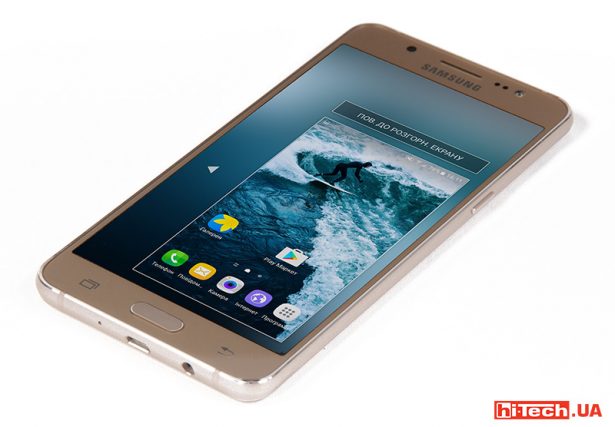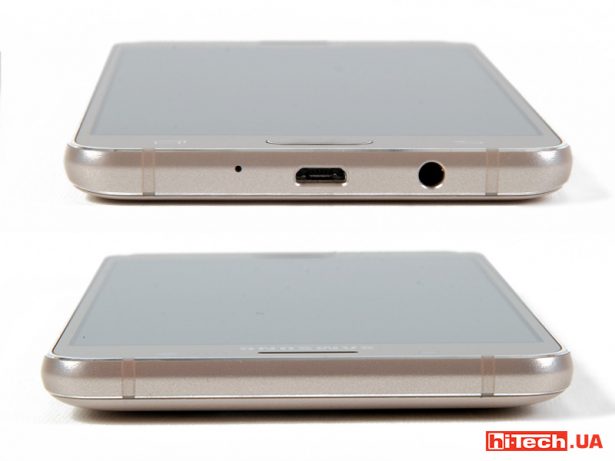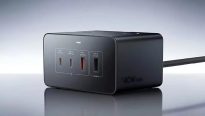The fight against low prices: a comparative test of budget smartphones
26.08.16
The budget segment of smartphones is very diverse. Moreover, the difficulty of choosing is made by many attractive price offers. What should you pay attention to and why are Chinese brands not yet a clear option when choosing a budget smartphone?
Read in this article:
- What’s going on in the smartphone industry
- About the participants of the comparative test
- Samsung Galaxy J5 (2016) and J7 (2016)
- Meizu M3 Note
- Xiaomi Redmi 3
- Comparison of photos from cameras
- Conclusions
The smartphone market is very hot today. Large and established mobile brands are finding it increasingly difficult to operate due to Chinese manufacturers. And although trends are not yet set by companies from the Middle Kingdom, they definitely have an increasing influence on the world order.
Just five years ago, Chinese companies were followers. They took successful solutions from leading manufacturers and implemented them into their own. In fact, the Chinese smartphone was a kind of aggregator of such successful ideas with reservations about quality. For some time, fierce slaughter took place within China and its neighboring countries before entering world markets. As a result, Darwin’s theory brought the most successful Chinese companies to the international stage. In some way, this came as a surprise to the world community. The already hot market for mobile devices has become boiling.
Very quickly the Chinese learned to make beautiful cases and use high-quality materials. In some places, good interface shells were developed. All in order to successfully compete with famous devices. As a result, the top leaders had to shrink, reduce the model range, and sacrifice ideas that were expensive to implement. Chinese companies, on the contrary, looking for compromises, tried to get into every price range.

Moreover, their marketers began to work very closely with the market, in particular to study and satisfy user needs. For example, for some time it was considered the norm for a smartphone to last one day on a single charge. And now, you already see a Chinese smartphone in the store that lasts not two, not three days, but a week. Moreover, it even has Android on board, albeit not the newest version. What difference does it make if you don’t have to insert a power cord into your smart phone from dawn to dusk?
The Chinese are able to assemble different components into a single device. But making the device complete in terms of software, algorithms and service is not always possible yet. Until now, this remains the hobby of global brands, which are forced to include this in the higher price of devices.

Even at the operating system level, there are questions that still apply to both cheap and expensive options. For example, in Android it is already almost completely possible to synchronize applications and accompanying data when moving from an old smartphone to a new one. Just a year or two ago, Wi-Fi passwords, for example, were transferred every other time. Now this can be solved either by a program from the vendor or not at all. It’s a gift that Apple did the transfer at the system level without any additions.
Companies realize that they must offer user-friendly devices. And the experience of using it is the only thing that can still be influenced in the fight for the buyer. It would seem that price will ultimately decide, but remember what we said earlier. Chinese manufacturers have long realized that simply assembling a piece of iron is not enough. “User experience” – these words are now repeated in every press release. And this is not easy, since emotions during and after purchase are the only thing that can distinguish one brand from another.
Therefore, this comparison involves representatives of different philosophies. It has some of the most acclaimed models in the Chinese smartphone industry. Moreover, both small and large, with plastic and metal, were collected. We will look at the balance of various parameters in budget smartphones. We will try to convey our impression of them from different points of view.

Screen diagonal and design mean absolutely nothing until you try the model in person
In the corner of Chinese brands there are models from Xiaomi and Meizu, and in the corner of world bigwigs there are a couple of models from Samsung. They are all similar in many ways, but as the test showed, they are all different in many ways.

How far can public sector employees of top brands go from the mass Chinese? It turns out it’s not far, but their path is no less successful
Does leadership in the global smartphone market help? Is it possible to successfully produce dozens of variations without losing brand appeal? Is it, after all, possible to grow a self-sufficient smartphone brand in two years? We provide answers to these and other questions in our comparative test.
Samsung Galaxy J5 and J7 2016

Visually, the 2016 Samsung J5 and J7 smartphones differ only in their overall dimensions
Samsung has been participating in the fight for the mid-range and budget smartphone market for several years now. We have already become acquainted with its A-series, but now the J-series is next. Samsung J5 and J7 models entered the market in March this year. Moreover, these are not the only models of the company’s available devices, but precisely those that can be officially purchased in Ukraine. How is the company doing on this path? Let’s just say that the main income now comes from sales of the new flagships S7 and S7 Edge. But this does not mean that Samsung’s lower-priced smartphones are bad.
ВVisually, Samsung J5 and J7 are difficult to distinguish. Only if you put them side by side does it become clear where the “youngest” is diagonally and where the “oldest” is. The cases have a metal frame, but the rear removable cover is made of plastic. The ergonomics of the models are familiar to this manufacturer. There is nothing bad or uncomfortable about it. For some, the weight of these devices may seem insufficient for a confident grip, although the difference in weight between them is insignificant. The arrangement of control buttons, cameras, speakers and connectors is classic for Samsung devices. The smaller model seems more comfortable to wear due to its smaller dimensions.
Samsung J5 and J7 received proprietary screens made using SuperAMOLED technology. Their resolution is HD. In practice, even for the 5.5-inch diagonal screen of the J7, this resolution was sufficient. Both models have all the necessary equipment and communications, moreover, they have NFC.
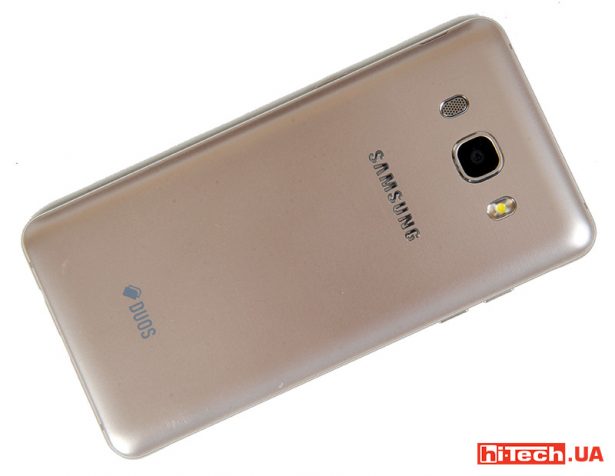
Both camera modules are 13 megapixels in size. with f/1.9 aperture. The cameras also have LED flash. Note that the front cameras of both models also have a flash. This allows us to call the device a device for taking selfies, although this is not the most basic feature. Both on paper and in practice, the resulting photographs look good. Of course, these are not super-capabilities of flagships, but, as they say, the groundwork is there.

Both smartphones, like other participants, support the use of memory cards. At the same time, the advantage is that there are separate slots for them. Under the cover, you can install two more SIM cards in addition to them and not have to choose what you need more – memory or a second number.
The batteries of the Samsung J5 and J7 models are rather large, and this is also visible in battery life tests. Moreover, the best result for the J7 is most likely achieved by an optimized shell and a relatively undemanding screen.
The TouchWiz shell did not change Android 6 much
As we already mentioned, data transfer, localization and stability are far from perfect among Chinese brands. There are also problems with activation and synchronization using your Google account on almost any smartphone. Samsung solved them by releasing its own migration app. The company decided not to rely on the fact that Android itself will one day be able to exhaustively transfer the data.
The camera interface is traditionally clear
Note that a number of solutions to improve user comfort also had the opposite effect on pricing. Top brands are forced to sacrifice technical characteristics in order to get at least a similar price level for their devices.
But when you buy a Samsung, you will receive a high-quality translated interface, no crashes (not counting problems with the instability of all Android systems over time) and the after-sales service that we mentioned at the beginning of the test.
Synthetic test results for Samsung Galaxy J5 (2016):
Synthetic test results for Samsung Galaxy J7 (2016):
| Characteristics | Samsung Galaxy J5 (2016) | Samsung Galaxy J7 (2016) |
| Screen diagonal | 5.2″ | 5.5″ |
| Screen resolution | 720×1280 | |
| Matrix type | Super AMOLED | |
| Processor: | Qualcomm MSM8916 Snapdragon 410 | Exynos 7870 |
| RAM | 2 GB | |
| Built-in memory | 16 GB | |
| Main camera | 13 MP. | |
| Front camera | 5 MPix. | |
| Card reader | yes, 128 GB | |
| OS | Android 6.0.1 | |
| Dual SIM support | yes | |
| Network | 2G, 3G, LTE | |
| Bluetooth | 4.1 | |
| Wi-Fi | b/g/n | |
| NFС | yes | |
| A-GPS, GPS, GLONASS | yes, yes, yes | |
| Fingerprint scanner | no | |
| Light sensor | yes | |
| IR transmitter | no | |
| Battery capacity | 3100 mAh | 3300 mAh |
| Case material | metal, plastic | |
| Dimensions | 145.8×72.3×8.1 mm | 151.7×76×7.8 mm |
| Weight | 158 g | 169 g |
| Price | 6000 UAH. | 7000 UAH. |
| Rating | + separate slot for memory card | |
| + high-quality localization | ||
| + great screen | ||
| + optimized shell | ||
| + front flash | ||
| + body ergonomics | + good battery life | |
| – price | ||
Meizu M3 Note

Even in a budget smartphone there was an opportunity to install a fingerprint sensor and a Full HD screen
Meizu M3 Note seems to be the most progressive device. It received the signature design of Meizu, which has taken inspiration from its competitors for years. The back side is made of metal, and the entire front side is covered with 2.5D glass. In terms of dimensions, the Meizu M3 Note is comparable to other smartphones with screen diagonals of 5.5”.
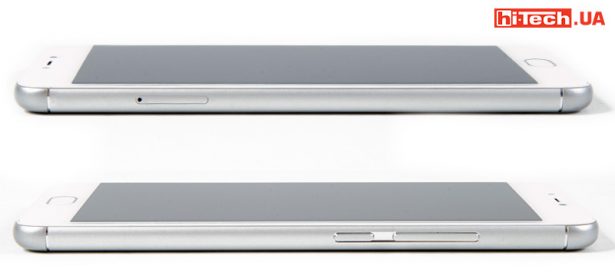
In white, the smartphone looks elegant; the overall simplicity and uncluttered design leave a pleasant impression. The assembly is excellent, the elements are located symmetrically. The case itself is thin and comfortable.

But there were some strange things too. The smartphone sometimes literally misleads you. The Home button, located below the screen, seems to be symmetrical relative to everything else. However, Meizu industrial designers decided to play with different materials for the body parts. As a result, the combination of the chrome bevel of the button, its matte plastic and the glossy finish of the front part creates an amazing optical illusion. I always get the impression that the button is positioned crookedly. And no matter how you twist your smartphone. By the way, the illusion is mirror-like and is also observed when turning the smartphone over. When the Home button is at the bottom, its right edge appears higher; when the smartphone is upside down, the picture is the same. We specially measured all the sizes, and geometrically everything is actually in order.
The M3 Note has a fingerprint scanner, which, by the way, is not very stable. We had to resave the fingerprint several times before the smartphone began to recognize it the first time. But for those who use pin codes to unlock in the Flame shell, there is a nice bonus: the code can be entered without lifting your finger from the screen. The result is a combination of digital and graphic keys. Only in this case the numbers should not be repeated one after another.

The camera on the smartphone unexpectedly turned out to be not very good. We expected it to be the same or even slightly better than the module in Redmi 3. But, despite fast focusing and adequate viewfinder performance, the post-processing algorithms have obvious problems.
In automatic mode, dark and light areas may not traditionally be expressed, or the light balance may shift to one side. In general, with automatic photography you get an ordinary photo taken on an average smartphone. In HDR mode, the M3 Note tries so aggressively to pull out dark areas that the green crowns of trees in the shade turn light green. The same effect occurs under other lighting conditions. The problem clearly lies in the field of software processing, and not the characteristics of the camera.
Another drawback that the M3 Note inherited from previous generations is that the camera interface still cannot be rotated to a horizontal orientation.
Camera interface in Russian:
Camera interface in Ukrainian:
The smartphone copes well with daily tasks. The Helio P10 processor used in it is not top-end, but for Full HD resolution and a device in the budget segment it is a good option.
The shell as a whole satisfies all the needs of even advanced users. For example, in the list of standard applications there is a memory, process and security control panel. The smartphone runs on Android 5.1 with the proprietary Flyme 5.1 interface. So far, the company has not switched the device to Android 6 and is probably waiting for the right moment to create a major news event.
Translation of the interface is not going well. It is known that Slavic languages are semantically longer and in the mobile interface menu items may not fit into the allotted space. Text pops out of buttons, menu items are interrupted by three dots, and you often have to poke around to find out what is written there. In the Ukrainian version, complete “game” is added to this in the names:
ЕIf top brands, such as Samsung, are still trying to play with changing wording and adapting interface design, the “Chinese” don’t bother with this. As a result, Russian often looks ugly on Chinese smartphones, and in Ukrainian localization it is both ugly and simply ignorant.
The battery capacity of the M3 Note is the same as that of the Redmi 3, but this is where the imbalance of the system plays a role. Meizu is far from taking the lead in the comparative test of autonomy.

However, if you want to try modern smartphone features at a low price, then Meizu is for you. Already in a budget model, like this M3 Note, there is a fingerprint scanner, also known as a touch “Back” button. There is also a good screen, a convenient menu and quite powerful hardware. And in older models from the “Chinese” you will also find flagship goodies, such as an advanced central audio processor. But be prepared for the fact that all this may be unstable.
Synthetic test results for Meizu M3 Note:
| Characteristics of Meizu M3 Note | |
| Screen diagonal | 5.5″ |
| Screen resolution | 1080×1920 |
| Matrix type | LTPS |
| Processor: | Mediatek 6755 Helio P10 |
| RAM | 2 GB |
| Built-in memory | 16 GB |
| Main camera | 13 MPix. |
| Front camera | 5 MPix. |
| Card reader | yes, 128 GB |
| OS | Android 5.1 |
| Dual SIM support | yes |
| Network | 2G, 3G, LTE |
| Bluetooth | 4.0 |
| Wi-Fi | b/g/n |
| NFС | no |
| A-GPS, GPS, GLONASS | yes, yes, yes |
| Fingerprint scanner | yes |
| Light sensor | yes |
| IR transmitter | no |
| Battery capacity | 4100 mAh |
| Case material | metal |
| Dimensions | 153.6×75.5×8.2 |
| Weight | 163 g |
| Price | 4200 UAH. |
| Rating | |
| + design | |
| + fingerprint scanner | |
| + performance | |
| – camera | |
| – localization, menu ergonomics | |
| – hybrid card tray |
Xiaomi Redmi 3
The Xiaomi Redmi 3 smartphone is very compact. In times of the current fashion for phablets, it seems, at best, a mini-version of some more serious device. Its main feature was a capacious battery with relatively compact dimensions and quite adequate technical characteristics.

The Redmi 3 case is non-separable. The back panel is made of metal. The pattern on the back side is practically not felt by the fingers, but has a rough surface, but the side edges and corners are absolutely smooth. In a calm environment, some “slipperiness” is not noticeable. However, in a hurry, it’s quite easy to drop your smartphone.
The front side is protected by glass. The screen has an oleophobic coating. Traditionally, the front panel houses sensors, a selfie camera and an earpiece.
The touch buttons below the display are not backlit. Next to them there is an indicator of missed events. But it seems downright superfluous, since the diode is small and practically indistinguishable.


On the top edge there is an additional microphone, a 3.5 mm audio output and an infrared transmitter. By the way, of our test participants, this is the only smartphone that can control household devices as a remote control.
Again, paying tribute to fashion, the SIM card tray is hybrid. You can choose between two SIM cards or one SIM card and a memory card. SIM cards of different formats – micro and nano. If you choose memory, you will need to use the micro version.

Note that for its price, the smartphone has many positive features associated with the proprietary MIUI shell. We know that many stores sell localized smartphones with Russian and Ukrainian languages. However, in our case, Redmi 3 came with the international basic version of MIUI, which only had Chinese and English languages to choose from. Note that we had experience working with MIUI, translated into Russian and Ukrainian. Everything is quite good there, and if there are any gaps, they are about the same as in Meizu.
Something else is important. MIUI is a really convenient and pleasant firmware. It has smooth and visual transition animation and a number of convenient interface features. In general, there are no false positives in the menu, except that the touch hardware buttons can get under your fingers.
The Xiaomi camera has the ability to take photographs with the flash already turned on. As a result, a photo in a dark room turns out to be more even in terms of illumination (on the left is a regular flash, on the right is activated at the moment of release)
Now about Google services that are not included in the basic firmware. At the time of preparing the test, the stable 7th version of MIUI was already installed on Redmi 3, and the 8th could be downloaded as a beta version. When buying a smartphone abroad, most likely it will be exactly like this.
If it is not important for you to have an interface in a language other than English, you can limit yourself to manual installation of Google Play Market. It is downloaded as an APK file, downloaded to your smartphone and installed from there.
- Not all menu items are even translated into English
However, we still recommend tinkering with flashing the firmware or giving the smartphone to one of the service centers, since even in the English official version some items and buttons remain in Chinese.
Self-updating software on Xiaomi is a separate matter. The community of developers and fans is very large. This is good from the point of view of long and stable support for almost all Xiaomi models. And this is an absolute horror for people who don’t want to dig through the forums about firmware versions and instructions for installing them. Fortunately, our stores have been selling devices with a well-translated interface for a long time. The main thing is to check during the purchase that the localization has actually been done.
However, if you want to somehow supplement or change the shell, there is a lot of room for maneuver. There are 11 (!) threads on the company forum with files for download. Among them are three types of firmware, all kinds of modifications, backups, recovery versions, etc. And this is only for this Redmi 3 model.
The main and still unresolved issue for Ukrainian Xiaomi users is service. It doesn’t matter whether you buy a smartphone from us or order from abroad. When you buy a Xiaomi in a remote regional center and it breaks down, you will have to take it to the nearest repair shop. Most likely, he will end up in a nearby regional center or even further away, in the capital. While services from the same Samsung are also available in a number of regional cities.
And yet, Xiaomi Redmi 3 is a rare case when we can say that the Chinese smartphone turned out to be well-built both in terms of ergonomics and services.
Xiaomi Redmi 3 synthetic test results:
| Characteristics of Xiaomi Redmi 3 | |
| Screen diagonal | 5.0″ |
| Screen resolution | 720×1280 |
| Matrix type | IPS |
| Processor: | Qualcomm MSM8939v2 Snapdragon 616 |
| RAM | 2 GB |
| Built-in memory | 16 GB |
| Main camera | 13 MP. |
| Front camera | 5 MP. |
| Card reader | yes, 256 GB |
| Separate MicroSD slot | no |
| OS | Android 5.1 |
| Dual SIM support | yes |
| Network | 2G, 3G, LTE |
| Bluetooth | 4.1 |
| Wi-Fi | b/g/n |
| NFС | no |
| A-GPS, GPS, GLONASS | yes, yes, yes |
| Fingerprint scanner | no |
| Light sensor | no |
| IR transmitter | yes |
| Battery capacity | 4100 mAh |
| Body material | metal, plastic |
| Dimensions | 139.3×69.6×8.5 mm |
| Weight | 144 g |
| Price | 3800 UAH |
| Rating | |
| + autonomy | |
| + price | |
| + IR | |
| – hybrid card tray |
Comparison of photographs taken with the main cameras of participating smartphones (available in original resolution):
Automatic mode outdoors
- Samsung Galaxy J5 (2016)
- Samsung Galaxy J7 (2016)
- Meizu M3 Note
- Xiaomi Redmi 3
Macro mode
- Samsung Galaxy J5 (2016)
- Samsung Galaxy J7 (2016)
- Meizu M3 Note
- Xiaomi Redmi 3
Automatic indoor mode
- Samsung Galaxy J5 (2016)
- Samsung Galaxy J7 (2016)
- Meizu M3 Note
- Xiaomi Redmi 3
Flash in a dark room
- Samsung Galaxy J5 (2016)
- Samsung Galaxy J7 (2016)
- Meizu M3 Note
- Xiaomi Redmi 3
Numbers are very important. Based on the tables and example photographs, you have probably already formed your opinion about the devices. It was the same for us until we spent a week exploiting each of the participants. Therefore, when reviewing the table, take into account the impressions described for each of the models. Below we present the main conclusions drawn after the comparative test.
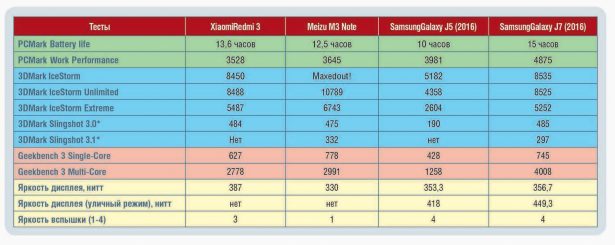
The compact version of Logitech mice is not a simplification. Excellent ergonomics and feature set continue in the new Logitech MX Anywhere 3
10 main conclusions after comparison
-
- The Xiaomi baby unexpectedly received the largest number of cores. Of course, quantity does not mean quality. But for its price it was able to get very close to the more top-end models.
- Optimization is everything. Samsung J7 has a large screen and, apparently, a well-optimized system. This smartphone was able to overcome the very autonomous Redmi. In practice, the J7 actually lived for two days with average-moderate use.
- Meizu’s design and ergonomics are really good. Apart from minor oddities, it has a very solid build, and the elements are arranged neatly. If the Chinese used to ignore perfectionism, this is no longer the case.
- Samsung smartphones have separate slots for memory cards. Here you don’t need to choose what you need more – memory or the second number. Plus, for some users, when choosing, it still remains fundamental whether the battery is removable or not.
- Meizu gives you the opportunity to try fashionable smartphone features for little money. The fingerprint scanner – also known as the touch home button – has long ceased to be the province of flagship devices. The question is how stable does it work.
- That rare case when the Super AMOLED matrix was inferior in brightness to another. However, this is in standard operating mode. Samsung smartphones have added an “outdoor” mode, which dramatically increases this indicator and leaves no chance for anyone, as before.
- Meizu’s proprietary Flyme shell tries to copy the approach to the iOS interface. Nobody says that copying is definitely bad. But this must be done efficiently. And although the shell looks good and generally satisfies all user requests, the Chinese still have to work on localization. On a pleasant note, the list of standard applications includes a memory, process and security control panel. There is no need to delve into the advanced settings of Android.
- A trivial thing, however, no less in demand in everyday life: the operation of a camera flash as a flashlight. In the table we have given a relative assessment of the brightness of the diodes for the cameras of our participants. In addition, so far only Samsung has a newfangled flash arrangement for the front cameras of our participants.
- When purchasing a Chinese smartphone in a store, do not forget to fill out all warranty documents. There are known cases when the firmware installed in domestic stores did not receive updates “over the air”, which usually come to localized versions.
- Chinese smartphones are rapidly approaching the industry leaders. But even the most sophisticated device requires services and a good “user experience” in order to sell well. Large companies like Samsung are constantly working on improvements and optimization. Last but not least, all users may need support service after purchase. And even if the smartphone is budget, this is not a reason to throw away a hundred dollars because it is impossible to repair or replace it for free. Of course, service and high-quality localization provoke an increase in the price of the device, but in return they give peace of mind and a product out of the box, ready to immediately turn on and work.
hi-tech.ua project manager
Don't miss interesting news
Subscribe to our channels and read announcements of high-tech news, tes
Oppo A6 Pro smartphone review: ambitious

Creating new mid-range smartphones is no easy task. Manufacturers have to balance performance, camera capabilities, displays, and the overall cost impact of each component. How the new Oppo A6 Pro balances these factors is discussed in our review.
Top news of 2025 on hi-tech.ua

Our editorial team traditionally sums up the results every year. We recently showcased the editors’ top devices. Now it’s time to share the top news stories from hi-tech.ua in 2025.
Poco M8 and Poco M8 Pro will be on sale on January 8, 2025. First 380 paid customers will get gifts smartphone
Xiaomi has officially confirmed the debut of the new Poco M8 series smartphones, which will include a base model and a Poco M8 Pro model. The presentation is scheduled for January 8.
Xiaomi introduced a desktop charging station with a total power of 2500 W charger Xiaomi
Xiaomi Desktop Charging Station 140W is equipped with eight ports. The design includes two USB-C connectors, each of which, when connected alone, is capable of delivering up to 140 W according to the PD 3.1 standard.



